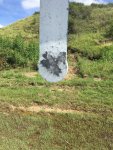Primers equal ignition, period.
They are often rated on a single characteristic, called brisance meaning, roughly, "sparkiness". They are also categorized by terms like "Magnum", and, of course by size.
Precision Shooting (and others, I'm sure), did an article that covered the entire gamut, replete with spectacular looking photography depicting primers in the act of being "sparky". There was a
wide range of "sparkiness" observed.
Rifle and pistol primers look interchangeable, but they are not.
The cup thickness is thinner on pistol primers and this requires a caveat, they are designed of pistol pressures, and should not be used where higher (rifle, magnum) pressures are likely. This is a serious safety issue. They are also shallower than a rifle primer, and when seated properly, their contact surface is recessed, and may not allow proper firing pin performance. This is a serious reliability issue.
Rifle and magnum primer also look identical, but again, they are not.
The magnum cups incorporate thicker walls to accommodate magnum pressures (one of the critical factors in designating magnums involves those higher magnum pressures). Some folks use magnum primers in non-magnum applications. I imagine they are expecting performance boost, and to a degree, I suppose they are right. But this does not do anything that a higher powder charge weight will not do, and that charge weight is a lot more adjustable. It will also send a column of ignition flash further into the powder column, which in main part, simply drives the bullet into the rifling further before the main ignition sequence occurs, and I cannot, for the life of me, see what the benefit is in doing that. Use the proper primer for the particular case design and application.
Finally, some folks use a magnum primer because they believe it will give a more positive ignition under deep cold weather conditions.
I suppose it would, but it would also do it at the cost of requiring a complete load development rework, which would also probably only work right if done under those ultra cold conditions. I prefer to employ a
Winchester primer, which is configured to work with harder to ignite Winchester ball powders, which have a heavy grain coating and require a more positive ignition source. By using the Winchester primers, one can achieve a load that works well (at least well enough) under both cold and temperate conditions.
Winchester primers come as close as possible to what I would like to term as an all weather primer. They are the primer I employ in applications where ignition failure can have costly consequences; like Military Ball ammo (Garand M-2 Ball), and hunting loads, which may have to down dangerous game during particularly cold conditions.
Match primers are an entire subject on their own.
They are primarily configured to bring greatest consistency to the ignition sequence. There is a lot of conjecture as to what this means and how that can be best achieved. The best performers exhibit a much more "tame" brisance. This has led to the grand exploration of the small primer case. It can be made to work, but how well it accomplishes this goal can often attract an argument. I don't have an answer to that, nor do I have a dog in the fight.
I ignore the issue completely, and go with the more "conventional" methodology.
This posting is largely a compilation from my own faulty memory of the bulk of work that was done in the 90's on this subject. If you disagree with any of it, I'll immediately concede that you could well be right.
Let me be the ogre.
Greg
PS After over 30 years of serious accuracy reloading, I limit my primers to CCI BR and Standard Primers, and Winchester Primers for appropriate applications. This is largely a decision based on local on-the-shelf availability, and not an endorsement.
My load development begins with an arbitrary choice of CCI Standard primers. Once load development is complete, I switch out with CCI BR primers to determine if any significant performance improvement can be gained. Occasionally one can, but it's not definite by any means (mostly because most accuracy nodes are broad enough that the small performance differences between Standard and Match Primers simply cannot be discerned). For me, Match Primers must earn their place on the recipe.
For match applications, I ignore the economics and use Match Primers. I need the better expectation of consistency.



